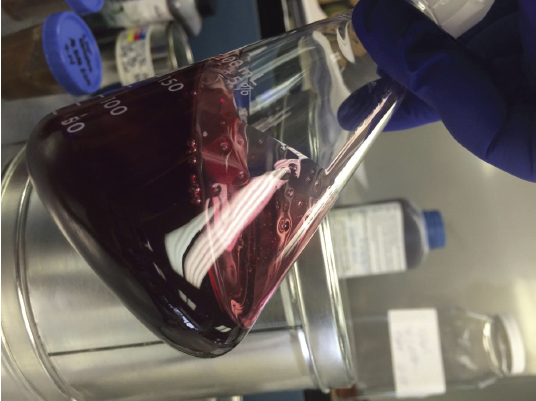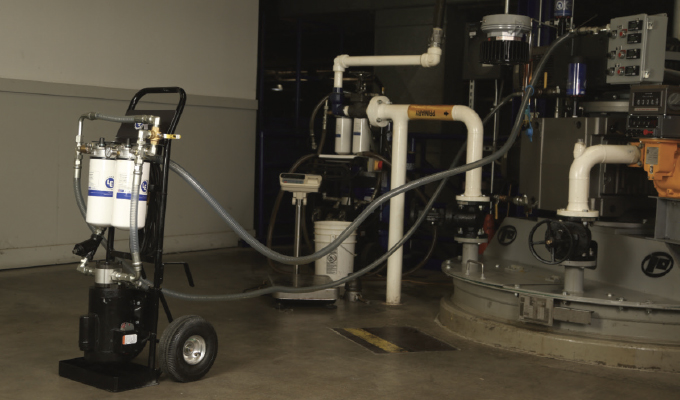Industrial facilities face many lubrication-related challenges, particularly with the demanding conditions found in industries such as cement, mining and construction. The biggest challenges are contamination from dirt, infiltration of moisture, and incorrect lubricant choice for the application. Failure to deal with these issues increases wear on mechanical equipment, resulting in greater rates of equipment downtime and higher maintenance expenses. Read on to learn how proper lubrication practices lead to better equipment performance and ultimately results in substantial cost savings.
COMMON LUBRICATION-RELATED ISSUES FACED BY INDUSTRIAL FACILITIES
About 75 percent of mechanical wear on industrial equipment is due to contamination from silica (outside dirt). Internal friction and outside particles are extremely destructive to metal. Circulating solid particulates in the lubricant risks damaging the base oil, stripping away additives, and harming critical components. The best practice is to begin by filtering the lubricant—even when new—because newly delivered lubricants in pails, drums, or totes tend to have elevated particle counts.
Before and after filtration, oil samples should be sent to the lab for two reasons: first, to verify that the product inside the container matches the label and product type ordered, and second, to confirm that filtration is effectively accomplishing the specific ISO Cleanliness Codes for the assets these new oils are going in.
The second biggest challenge is water or moisture; ridding the oil of moisture is critical to provide the best overall performance. Moisture can lead to lubricant degradation and equipment damage, particularly in environments like surface mining and construction where equipment is frequently exposed to water and humidity.
It should be noted that any type of manufacturing facility may be affected by these destructive contaminants, but the worst cases are found in mining. This is especially true for surface mining, where outside equipment is affected by rock, dust and debris; any time equipment is running it is breathing in water and silica. Construction is another example, as well as power plants, especially those that use pulverized or ground coal as a source.
The third challenge is making sure plant personnel are storing the lubricants properly and putting the right lubricant into the right application. Lubrication Engineers, a leader in the development and manufacturing of high-performance lubricants and reliability solutions, has conducted surveys that examine lubricants used in assets and cross references them with original equipment manufacturer (OEM) instructions and manuals. The studies have found that about 12-14 percent of lubricants being used are either the wrong type or the wrong viscosity, which may lead to more frequent oil changes or speed up the oil’s rate of oxidation. Once the lubricant film is ruptured, it cannot protect the critical component of the asset and may result in faster mean time between repair (MTBR).
Reviewing the health of the asset and the oil, and conducting an analysis that includes fluid properties, wear metals, particle count, contaminants (fuel, soot and moisture) and contaminant metals (silica and coolant) will ensure the asset’s integrity is not being jeopardized. Failing to do this will contribute to the need for more frequent oil changes or repairs.

HIGHER QUALITY LUBRICANTS EXTEND EQUIPMENT LIFESPAN AND IMPROVE RELIABILITY
To meet the challenges, facilities should consider the use of higher quality lubricants, which maintain the integrity of oil so it will last longer. Maintaining oil’s viscosity without breaking down is key; once you lose the integrity of lubricating oil, you are risking more wear on metal. With a higher quality lubricant, viscosity is maintained for a much longer period of time. While lower quality lubricants may cost three to four times less than premium products, their use leads to more mechanical wear, more reactive labor, and more machinery unavailability or downtime.
Using high-quality lubricants will result in fewer oil changes, repairs, reactive labor, and unplanned downtime. With quality products, facilities may go from changing the lubricant every six months to once every couple of years. And, if the quality products are combined with condition monitoring and contamination prevention initiatives, the lubricant lifespan could be extended as long as three to five years.
Differences in how lubricants are formulated have a huge impact on their ability to perform and protect. Lower quality commodity type products do not begin with high-quality base oil or additive package, which will lead to shorter lubricant lifespan and asset protection. In addition, failure to effectively remove and prevent contaminants will result in shorter lubricant lifespan and speed up critical component MTBR.
High quality lubricants, such as those offered by Lubrication Engineers, differ in both formulation and the level of service behind them. They begin with the use of base oil from North America, which is a richer and purer higher quality of crude oil. The second aspect is the degree of refining of the base oil to clean it to very high standards, because the cleaner the oil the more integrity it has. Once refined and cleaned, it goes to a secondary refinery. The third factor is the additive package blended into the final lubricants. Lubrication Engineers constantly adjusts its lubricant recipes, looking for synergy with quality and amounts of additives that work together to produce the best product for specific applications, including rotating equipment, engines and gearboxes.
When comparing the cost of lubricants for facilities using commodity lubricants and those investing in premium solutions, it is important to evaluate the lubricants’ ability to reduce cost centers, including oil change intervals, reactive labor, repair costs, and downtime.
A LOOK AHEAD
Implementing best practices and protecting assets by using higher quality lubricants will result in greater savings across repairs—because they happen less frequently. Facilities achieve lower overall costs with higher quality lubricants paired with preventative and predictive maintenance strategies.
Using the right lubricants and lubrication strategies will allow oil to maintain its health for the longest period. This maximizes return on that lubricated asset by reducing labor, parts in the storeroom, and the cost associated with asset availability and downtime.
Next month, we’ll conclude this series by examining how to Pair quality lubricants with preventive maintenance and staff training to maximize the benefits of your lubrication strategies. We’ll also provide some real-world examples of these savings with the numbers to back it up!
Founded in 1951, Lubrication Engineers, Inc. has grown from a visionary lubricant company to a global leader in lubrication reliability solutions. With a commitment to quality and innovation, the company develops proprietary formulas and premium lubricants that enhance machinery performance and reduce equipment wear. Operating a state-of-the-art manufacturing facility in Wichita, Kansas, and with a network spanning across the United States and more than sixty countries, Lubrication Engineers provides tailored solutions and exceptional service to businesses worldwide, helping them optimize equipment performance and achieve long-term operational success. For more information, visit www.lelubricants.com.


